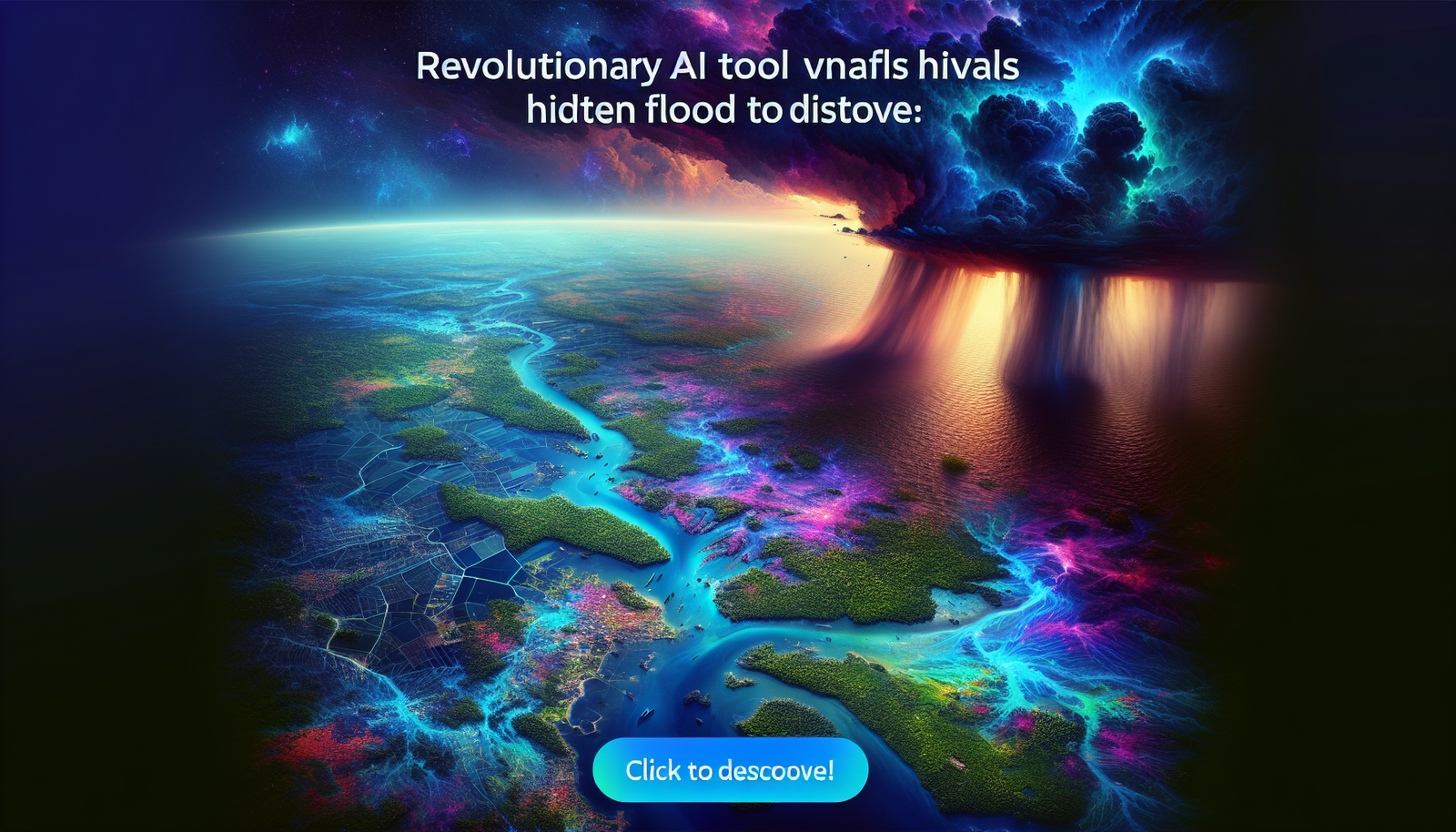The anticipation of natural disasters is >one of the major challenges of our time, especially in the face of *devastating floods*. A new artificial intelligence tool, capable of generating realistic satellite images, is revolutionizing crisis preparation and management. By combining physical models and artificial intelligence, this tool provides detailed visualizations of at-risk areas, helping to *mobilize communities* and plan evacuations. The promising results of this research should transform our approach toward forecasting *future floods*, which pose a severe threat to those living in coastal and riverine areas.
An AI Tool to Anticipate Floods
Researchers from the Massachusetts Institute of Technology (MIT) have developed a revolutionary method that uses artificial intelligence to generate precise satellite images of future flood scenarios. This innovative approach relies on a generative artificial intelligence model combined with a physical flood prediction model, thus accurately simulating the areas likely to be affected by an imminent natural disaster.
Operating Principle
This new algorithm links satellite images generated by artificial intelligence to physical models to predict the effects of storms. As a case study, the research team focused on the city of Houston, creating visuals illustrating the potential impact of a hurricane-like storm, Harvey, which occurred in 2017. The generated images were compared with actual satellite photos taken after this disastrous event.
Results Obtained
The images created using the method incorporating physical simulation demonstrated superior realism and accuracy compared to those produced solely by the artificial intelligence model. The visuals generated by the latter lacked veracity, sometimes showing floods in places where they could not occur, such as in high-altitude areas.
Practical Application and Perspectives
The method, presented under the term “Earth Intelligence Engine,” illustrates a concept that could transform how the public prepares for emergencies. Björn Lütjens, the principal author of the project, specifies that this tool could be used to raise awareness among populations and encourage evacuations when necessary. The ultimate goal is to add a level of visualization that is both tangible and engaging for people in danger zones.
Techniques Used
The mechanism relies on conditional adversarial neural networks, or GANs, which generate images by competing between two networks. One network, the generator, trains on real data, while the second, the discriminator, learns to distinguish real images from synthetic ones. Such synergy aims to create visuals of sufficiently high quality that they are indistinguishable from reality, although hallucinations remain a challenge to address in the generated results.
Public Policy Implications
Policymakers can adopt more informed measures thanks to satellite visualizations that clarify where floods may occur. Traditionally, they rely on colored maps produced from physical models, which may be less engaging. Adding realistic satellite images represents a new perceptual and emotional dimension that could change the communication of flood-related risks.
Tool Availability
Researchers have made the tool available through an online platform, allowing other experts to test this technology. This open sharing could foster the implementation of innovative solutions in various contexts, thus enhancing resilience to natural disasters.
Impact and Funding
The project has benefited from the support of several institutes and organizations, such as the MIT Portugal Program and NASA. This support reflects the importance of research on predictive models that rely on reliable data to mitigate the impact of severe weather. The advancements made resonate with various initiatives aimed at using artificial intelligence for environmental and public health causes.
Frequently Asked Questions about the AI Tool for Anticipating Future Floods
How does this AI tool generate realistic satellite images?
The tool uses a generative adversarial intelligence model (GAN), which compares real satellite images before and after climatic events to create accurate simulations of future floods.
What is the importance of satellite images in flood forecasting?
Satellite images provide a complete overview of a region, allowing the identification of areas vulnerable to flooding, which helps residents and authorities make informed decisions regarding evacuation and preparedness.
Can this technology be applied to other natural disasters?
Yes, the method can be adapted for other types of natural disasters, such as storms or earthquakes, by integrating other appropriate physical models for each scenario.
Is this technology accessible to the general public?
Yes, the tool is available online, allowing anyone interested to explore and test its features at no cost.
What types of data are needed to train the tool?
The tool requires a large dataset of satellite images and weather data, including information on hurricane paths and flood modeling to be effective in different regions.
How can this technology improve evacuation decisions?
By providing realistic visualizations of areas threatened by floods, it helps raise public awareness and strengthen the necessity for rapid evacuation, potentially saving lives.
Can the tool make mistakes in flood modeling?
Like any technology, hallucinations can occur in the generated images, but the integration of physical models helps minimize these errors for more reliable results.
What are the implications of using AI for public policy?
The adoption of this technology can allow decision-makers to obtain reliable data to better plan and manage rescues and infrastructure, thus enhancing resilience to disasters.






